In the realm of electrical engineering and home safety, understanding the function and importance of circuit breakers is paramount. These crucial components act as guardians of our electrical systems, preventing overloads and potential hazards.
This article delves deep into the world of circuit breakers, providing a comprehensive guide for both the layman and the enthusiast.
What is a Circuit Breaker?
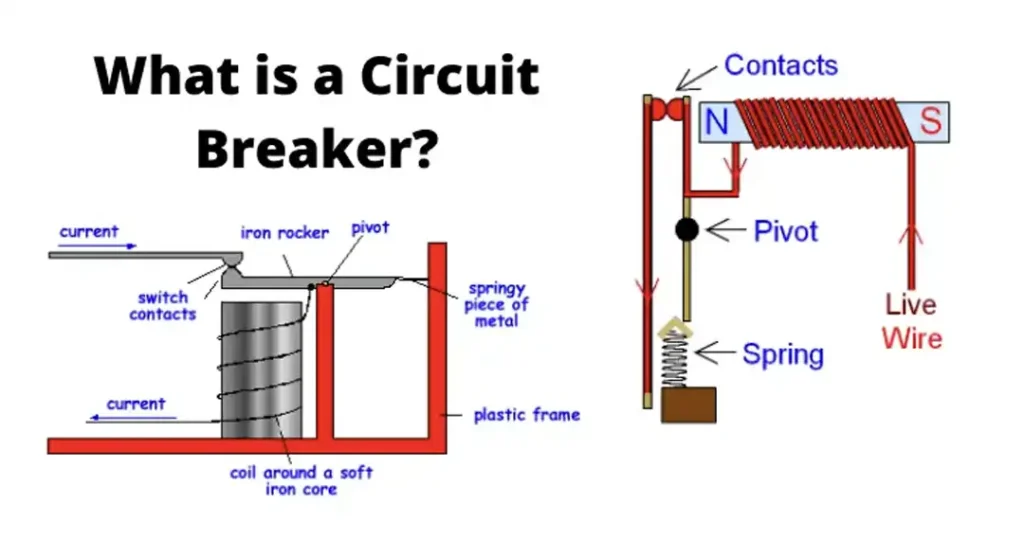
A circuit breaker is a protective device designed to interrupt the flow of current in an electrical circuit when it detects excessive current due to overload, short circuit, or ground fault. It serves as a safety mechanism to prevent damage to electrical appliances, wiring, and infrastructure, as well as to mitigate the risk of fire.
What is a Circuit Breaker Used For
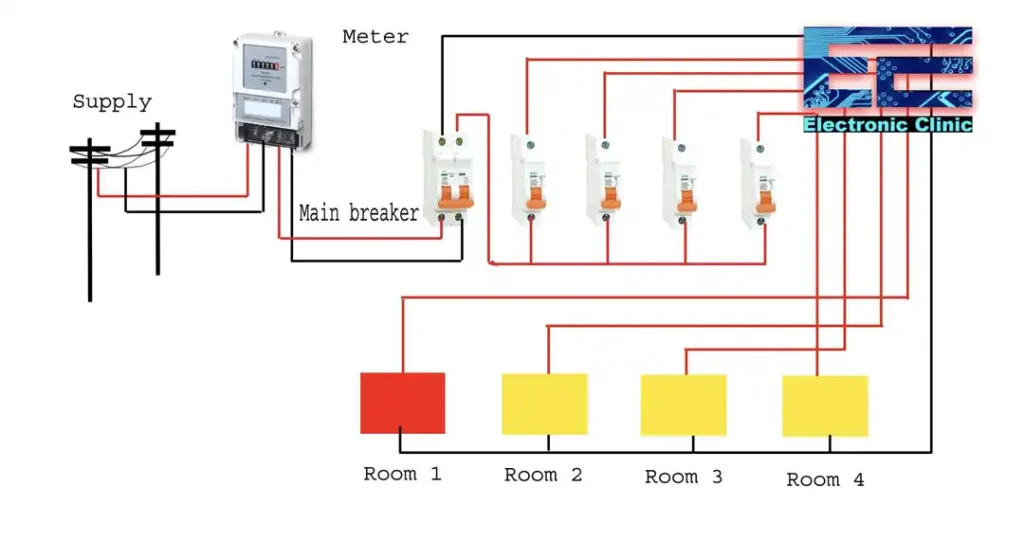
Certainly! A circuit breaker serves as a crucial safety device in electrical systems, acting as a barrier between your electrical devices and potential dangers.
Here’s a more detailed explanation of what circuit breakers are used for:
Overload Protection: One of the primary purposes of a circuit breaker is to protect against overloads. An overload occurs when too many electrical appliances or devices are connected to a single circuit, drawing more current than the wiring can handle. This excess current can lead to overheating and potentially cause fires. Circuit breakers detect these overloads and automatically disconnect the circuit to prevent damage.
Short Circuit Protection: A short circuit occurs when a hot wire comes into contact with a neutral wire or a ground wire, creating a low-resistance path for electrical current. This results in a sudden surge of electricity, which can generate heat and sparks, posing a fire hazard. Circuit breakers detect short circuits and immediately interrupt the flow of current to prevent further damage.
Ground Fault Protection: Ground faults occur when a hot wire comes into contact with a grounded surface, such as a metal conduit or a wet floor. This can lead to unintended current flow through the ground, potentially causing electric shock or electrocution. Circuit breakers equipped with ground fault circuit interrupters (GFCIs) detect these faults and quickly shut off power to prevent injury.
Fire Prevention: By promptly disconnecting power in the event of an electrical fault, circuit breakers play a critical role in fire prevention. They help mitigate the risk of electrical fires caused by overheating, short circuits, or arcing faults, thereby enhancing the safety of homes, offices, and industrial facilities.
Equipment Protection: In addition to safeguarding occupants and property, circuit breakers also protect electrical equipment and appliances from damage due to electrical faults. By interrupting the flow of current during abnormal conditions, circuit breakers prevent costly repairs or replacements of valuable assets.
Circuit breakers are essential safety devices that ensure the reliable operation of electrical systems while minimizing the risk of electrical hazards. Whether in residential, commercial, or industrial settings, these devices play a crucial role in maintaining electrical safety and preventing potential disasters.
5 Basic Components Used in Every Circuit Breaker
Circuit breakers, regardless of their type or design, typically consist of several basic components that work together to provide protection and control over electrical circuits.
Here are the five fundamental components found in every circuit breaker:
- Frame or Enclosure: The frame or enclosure forms the outer casing of the circuit breaker, providing structural support and housing for internal components. It protects the internal components from environmental factors such as dust, moisture, and physical damage.
- Contacts: Contacts are conductive metal plates or pieces within the circuit breaker that make or break the electrical connection within the circuit. When the circuit breaker is closed, the contacts are in a closed position, allowing current to flow uninterrupted. When a fault or overload occurs, the contacts open to interrupt the current flow and protect the circuit.
- Operating Mechanism: The operating mechanism is responsible for controlling the opening and closing of the circuit breaker contacts. It can be manual, where an operator physically toggles a switch to open or close the circuit breaker, or automatic, where internal mechanisms detect faults and automatically trip the breaker.
- Tripping Mechanism: The tripping mechanism is a crucial component that initiates the opening of the circuit breaker contacts in response to abnormal conditions such as overload, short circuit, or ground fault. It consists of sensors, solenoids, or bimetallic strips that detect excessive current or abnormal conditions and activate the mechanism to trip the breaker.
- Arc Quenching System: When the contacts of a circuit breaker open, an arc may form between them due to the interruption of current flow. The arc quenching system is designed to extinguish this arc quickly and safely to prevent damage to the contacts and surrounding components. This system may include arc chutes, magnetic blowout coils, or arc extinguishing chambers.
These five components form the core elements of every circuit breaker, allowing it to effectively protect electrical circuits from overloads, short circuits, and other faults. While circuit breakers may vary in size, voltage rating, and specific features, these fundamental components remain essential for their operation and functionality.
How does a Circuit Breaker work?
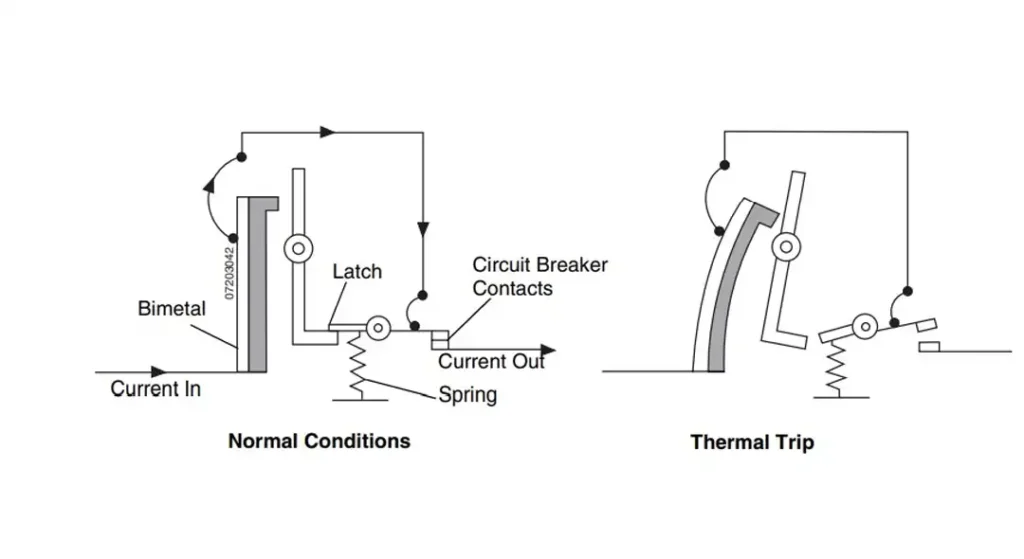
A circuit breaker works by continuously monitoring the flow of electricity through an electrical circuit and automatically interrupting that flow when it detects abnormal conditions that could lead to damage or hazards. Here’s a more detailed explanation of how a circuit breaker works:
- Normal Operation: Under normal conditions, electricity flows freely through the circuit breaker, allowing appliances, lights, and other electrical devices to operate as intended. The circuit breaker’s contacts are closed, completing the electrical circuit and allowing current to pass through.
- Detection of Abnormal Conditions: The circuit breaker continuously monitors the electrical current flowing through the circuit. When an abnormal condition occurs, such as an overload, short circuit, or ground fault, the circuit breaker’s trip mechanism detects the irregularity.
- Activation of Trip Mechanism: Once the trip mechanism detects an abnormal condition, it initiates the process of tripping the circuit breaker. The type of trip mechanism varies depending on the type of fault being detected. For example, thermal trip mechanisms respond to overloads by measuring the heat generated in the circuit, while magnetic trip mechanisms detect sudden increases in current characteristic of short circuits.
- Opening of Contacts: Upon activation of the trip mechanism, the circuit breaker’s contacts quickly open, interrupting the flow of electricity through the circuit. This action effectively disconnects the electrical load from the power source, preventing further damage or hazards.
- Arc Extinguishing: When the contacts open, an electrical arc may form between them due to the sudden interruption of current flow. To prevent sustained arcing, which could lead to damage to the contacts and surrounding equipment, circuit breakers are equipped with arc extinguishing mechanisms. These mechanisms quickly extinguish the arc, ensuring safe operation.
- Resetting the Circuit Breaker: After the fault has been cleared and the abnormal condition resolved, the circuit breaker can be reset to restore power to the circuit. In many cases, circuit breakers can be reset manually by flipping the switch back to the “on” position. Some circuit breakers also feature automatic reset capabilities, where they attempt to reset themselves after a brief delay.
A circuit breaker serves as a critical safety device in electrical systems, protecting against overloads, short circuits, and ground faults. By continuously monitoring the electrical circuit and automatically interrupting the flow of electricity when necessary, circuit breakers help prevent damage to equipment, mitigate fire risks, and enhance overall electrical safety.
Types of Circuit Breakers
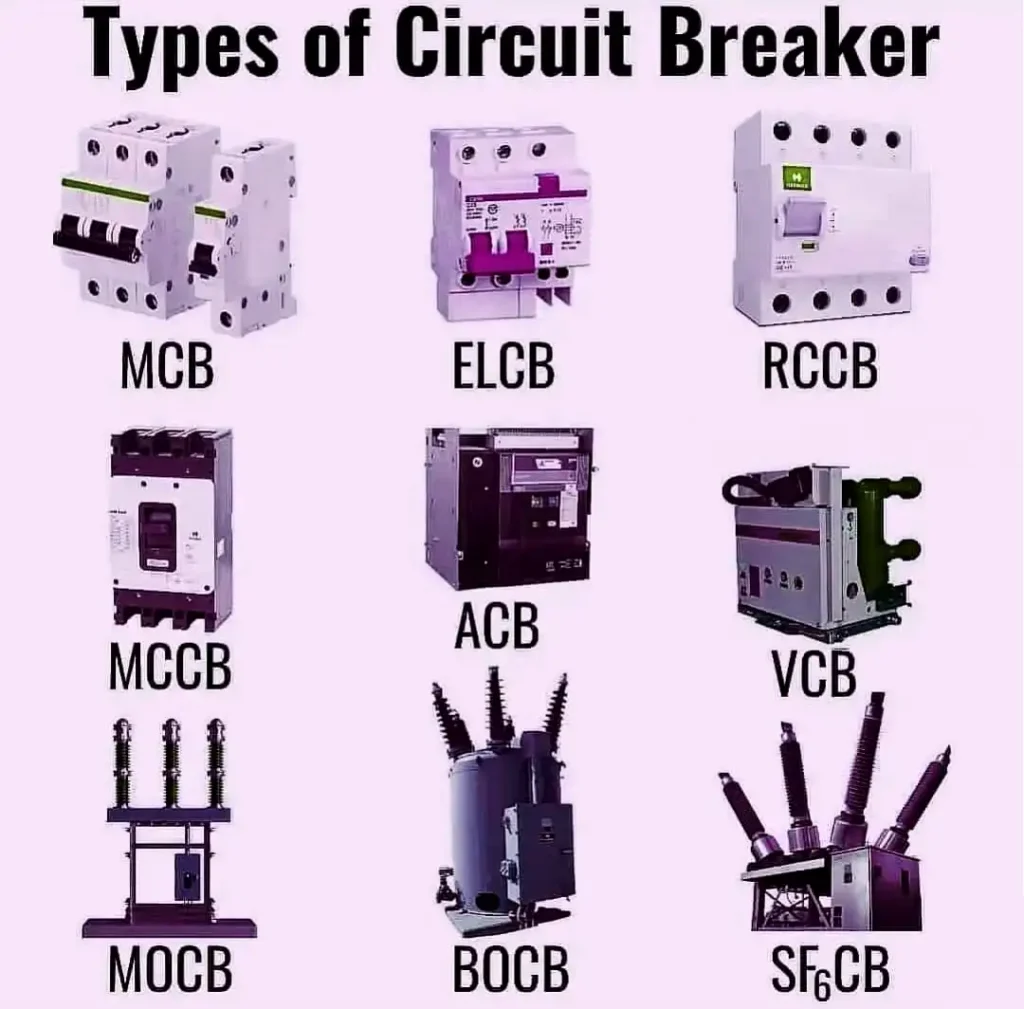
Here’s an explanation of the various types of circuit breakers commonly used in electrical systems:
Miniature Circuit Breakers (MCBs):
MCBs are widely used in residential and commercial settings to protect electrical circuits from overloads and short circuits. They are compact in size and offer efficient protection for individual circuits. MCBs are equipped with two tripping mechanisms: a delayed thermal tripping mechanism for overload protection and a magnetic tripping mechanism for short circuit protection. These mechanisms ensure that the MCB trips quickly and reliably in the event of an electrical fault, preventing damage to equipment and wiring.
Molded Case Circuit Breakers (MCCBs):
MCCBs are commonly found in industrial environments where higher currents are involved. They are designed to handle heavier loads and offer more robust protection compared to MCBs. MCCBs come in various sizes and configurations to accommodate different current ratings and trip characteristics. When selecting an MCCB, factors such as the application, current rating, and trip settings must be considered to ensure optimal performance and safety.
Residual Current Circuit Breakers (RCCBs):
RCCBs are essential for protecting against electrical leakage, particularly in areas where moisture is present, such as bathrooms, kitchens, and outdoor environments. These circuit breakers detect imbalances in current between the live and neutral conductors, indicating the presence of a leakage fault. RCCBs quickly disconnect the circuit when such a fault occurs, minimizing the risk of electric shock and fire.
Air Circuit Breakers (ACBs):
ACBs are primarily used in large facilities and industries where high currents and advanced protection features are required. They are capable of handling very high currents and offer superior performance compared to other types of circuit breakers. ACBs are ideal for heavy switching applications and can withstand frequent operation without degradation. Additionally, ACBs feature replaceable contacts, allowing for easy maintenance and extended service life.
Key Components of a Circuit Breaker
These key components work together to ensure the reliable operation of the circuit breaker and provide protection against electrical faults and hazards. By understanding the function of each component, users can appreciate the importance of circuit breakers in maintaining electrical safety and preventing damage to equipment and property.
- Switch: The switch is the external component of the circuit breaker that allows users to manually turn the breaker on or off. It functions like an on/off button for the electrical system, controlling the flow of electricity to the circuit.
- Trip Mechanism: The trip mechanism serves as the brain of the circuit breaker, responsible for detecting abnormal currents and initiating the disconnection of power. It continuously monitors the electrical current flowing through the circuit and activates the switch to turn off the power when it detects conditions such as overload, short circuits, or ground faults.
- Contacts: Contacts are internal components within the circuit breaker that control the flow of electrical current. When the circuit breaker is in the closed position, the contacts are connected, allowing current to pass through. However, when the trip mechanism activates, the contacts quickly separate, interrupting the flow of electricity and disconnecting the circuit. These contacts are crucial for protecting against overcurrent and short circuits.
- Arc Extinguisher: When the contacts of the circuit breaker separate, it can create an electrical arc, which is a sustained electrical discharge. The arc extinguisher is a chamber designed to quickly extinguish this arc when the contacts open. By extinguishing the arc, the chamber helps prevent fires and damage to the circuit breaker and surrounding equipment.
- Frame: The frame of the circuit breaker serves as the outer protective and supportive casing for the internal components. It encloses and shelters the switch, trip mechanism, contacts, and arc extinguisher, providing insulation and protection against environmental factors. The frame may be made of molded materials such as glass-polyester or plastic, or it may utilize metal frames for added durability and strength.
Each type of circuit breaker serves specific purposes and offers unique features to meet the demands of different applications. By understanding the characteristics and capabilities of each type, users can select the most appropriate circuit breaker for their specific needs, ensuring optimal protection and safety in their electrical systems.
Differences Between Circuit Breakers, Fuses, and Disconnects
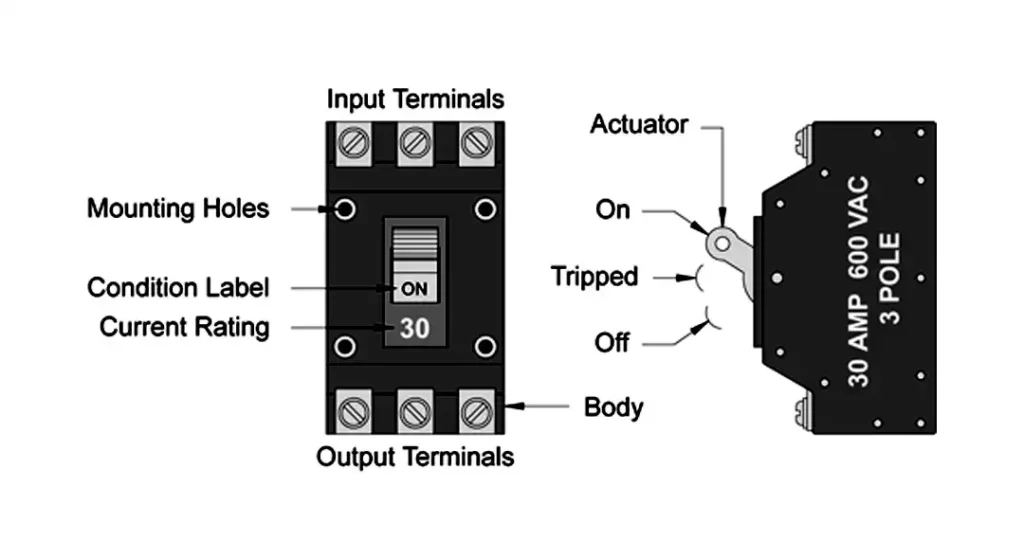
Here’s a detailed explanation of the differences between circuit breakers, fuses, and disconnects:
Circuit Breakers vs. Fuses
Circuit Breakers:
- Function: Circuit breakers are devices that automatically interrupt the flow of electricity when a fault, such as an overload or short circuit, is detected.
- Reusability: Circuit breakers are designed to be reusable. After tripping due to a fault, they can be reset either manually or automatically to restore normal operation.
- Components: They consist of several components, including a switch, trip mechanism, contacts, and arc extinguisher. These components work together to detect faults and interrupt the electrical circuit.
- Common Usage: Circuit breakers are widely used in residential, commercial, and industrial settings due to their reliability and ease of resetting.
Fuses:
- Function: Fuses are protective devices that stop the flow of electricity by melting a thin filament or wire inside a glass or ceramic casing when excessive current flows through the circuit.
- Reusability: Fuses are single-use devices. Once the filament inside the fuse melts due to an overload or short circuit, the fuse needs to be replaced.
- Components: A fuse consists of a metal filament or wire enclosed in a glass, ceramic, or plastic housing. The filament is designed to melt when a specific current threshold is exceeded.
- Common Usage: Fuses were commonly used in older electrical systems and are still found in certain applications, such as automotive circuits and some small appliances, where replacing a fuse is relatively simple and infrequent.
Circuit Breakers vs. Disconnects
Circuit Breakers:
- Function: As mentioned, circuit breakers interrupt the flow of electricity automatically when a fault is detected. They provide both protection and control within an electrical system.
- Usage: Circuit breakers are versatile and used across various settings, including residential, commercial, and industrial environments. They are essential for protecting circuits from damage due to overloads and short circuits.
- Additional Features: Circuit breakers often include additional features such as trip mechanisms and arc extinguishers, which enhance their protective capabilities.
Disconnects:
- Function: Disconnects, also known as disconnect switches, are manual switches used to isolate a section of an electrical circuit. They are primarily used to ensure that a circuit is completely de-energized for maintenance or emergency purposes.
- Reusability: Disconnects are reusable and designed to be operated manually. They do not automatically trip like circuit breakers.
- Components: A disconnect switch typically consists of a simple mechanical switch that can be turned on or off to open or close the circuit.
- Common Usage: Disconnects are often used in industrial and commercial settings where it is necessary to manually control and isolate electrical circuits for safety during maintenance or in case of emergencies. They are essential for ensuring that equipment can be safely serviced without the risk of electrical shock.
Here is a table summarizing the differences between circuit breakers, fuses, and disconnects:
| Feature | Circuit Breakers | Fuses | Disconnects |
|---|---|---|---|
| Function | Automatically interrupt electrical flow during faults | Melt a filament to stop electrical flow during faults | Manually isolate a section of an electrical circuit |
| Reusability | Reusable; can be reset after tripping | Single-use; must be replaced after melting | Reusable; operated manually |
| Components | Switch, trip mechanism, contacts, arc extinguisher | Metal filament or wire inside glass, ceramic, or plastic casing | Mechanical switch |
| Operation | Automatic trip when detecting overloads/short circuits | Melts when excessive current flows, interrupting circuit | Manually turned on or off |
| Common Usage | Residential, commercial, industrial settings | Older electrical systems, automotive circuits, small appliances | Industrial and commercial settings |
| Protection Offered | Protects against overloads, short circuits, and ground faults | Protects against overloads and short circuits | Provides manual isolation for maintenance and safety |
| Additional Features | Includes arc extinguishers, various trip mechanisms | Simple design, no additional features | Simple design, no additional protective features |
This table highlights the key differences, making it easier to understand the specific functions and applications of each type of device.
Conclusion
In conclusion, understanding what a circuit breaker is and how it works is essential for ensuring the safety and reliability of electrical systems. From residential homes to industrial facilities, circuit breakers play a crucial role in protecting against electrical faults, preventing damage to equipment, and reducing the risk of fires and electric shocks.
By learning about the key components and functions of circuit breakers, individuals can make informed decisions about their electrical infrastructure, ensuring that it meets safety standards and operates efficiently. Whether it’s selecting the right type of circuit breaker for a specific application or implementing preventive maintenance measures, knowledge about circuit breakers empowers individuals to safeguard their homes and businesses against electrical hazards.
For more information and tips on electrical safety, stay tuned to our blog for updates and informative articles. Remember, prioritizing electrical safety today can prevent accidents and save lives tomorrow.
Ready to enhance the safety of your electrical system? Contact us today for expert advice and assistance. Whether you need help selecting the right circuit breaker for your home or require professional installation services, our team is here to assist you every step of the way. Don’t compromise on safety – take proactive measures to protect yourself, your loved ones, and your property from electrical hazards.




















